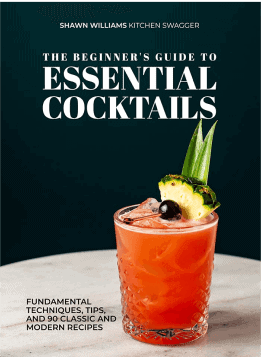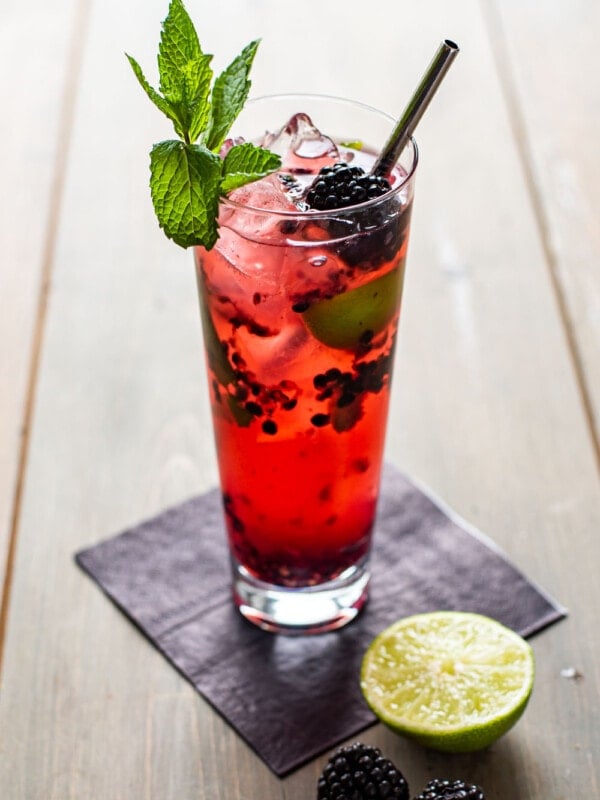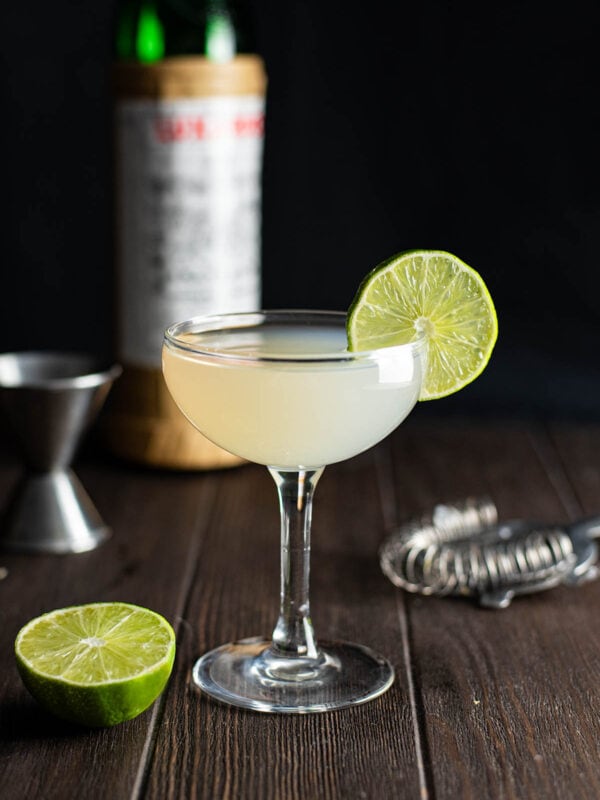This post may contain affiliate links. Please read our disclosure policy.
The classic Mojito recipe is a Cuban-born summer favorite made with white rum, fresh mint leaves, lime juice (or wedges), sugar (simple syrup), and a splash of soda water for a little fizz. If you grow mint leaves like me, you’ll have an endless supply of mint to make Mojitos all summer!

This classic cocktail is created by muddling fresh lime wedges, fresh mint leaves, and sugar, releasing citrus and minty aroma. The Mojito is shaken with unaged white rum and topped with soda water.
Table of Contents
Why I Love This Recipe
The classic Mojito makes for a great starting point for several fruitier spinoffs—like my blackberry Mojito. The best part is you can muddle in any fresh or frozen fruit you like and have different cocktails (try frozen mango!).
If you’re looking for more fruity and minty cocktails, try my blackberry whiskey smash, Authentic Mai Tai, and berry vodka smash.
Ingredients
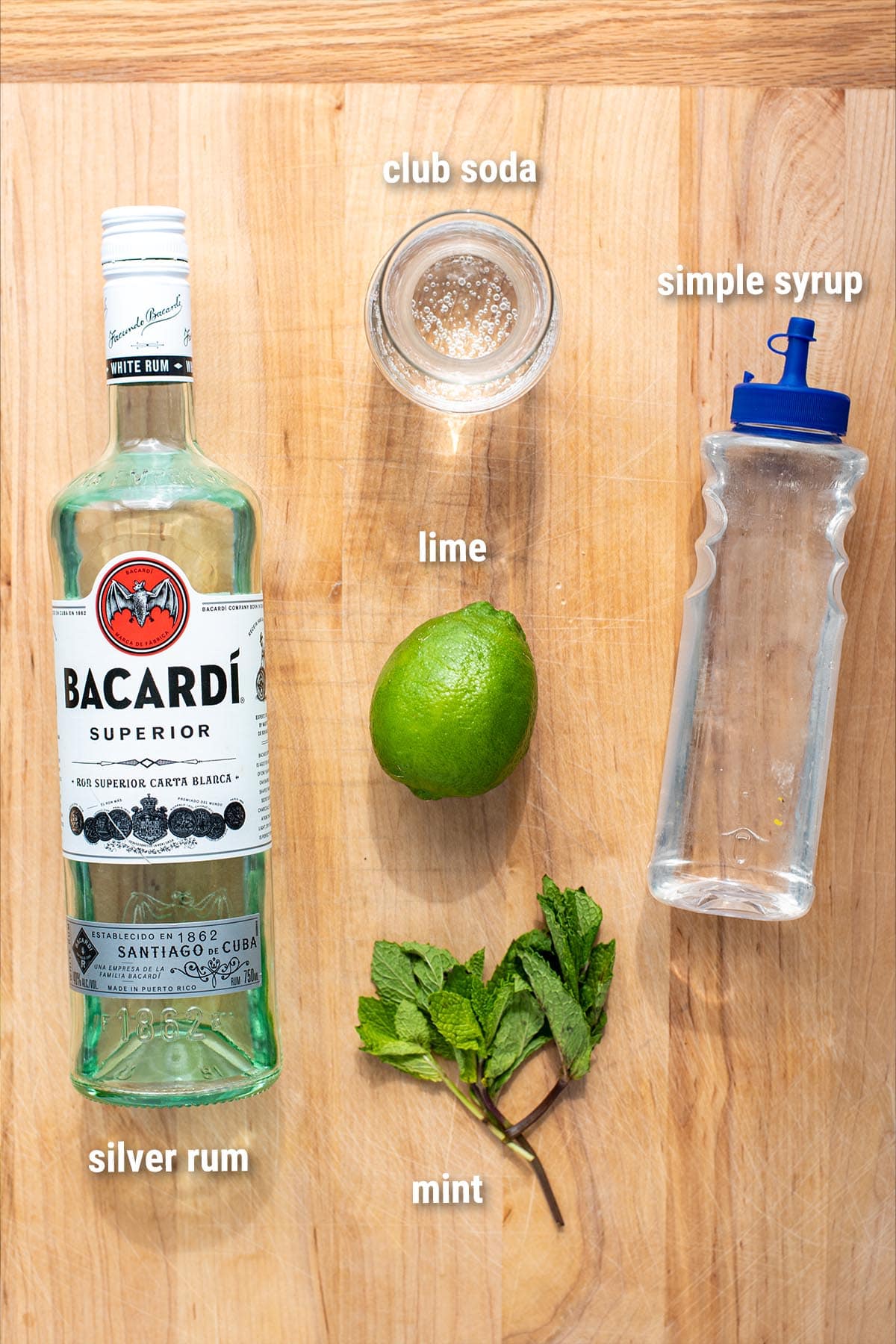
- White rum: any white/silver rum should do. I usually use Bacardi Silver because it’s affordable and easy to find. See also the Hemingway Daiquiri for my favorite rum cocktail!
- Club soda: adds fizz to the cocktail and opens up the flavors. You can also use sparkling water. If you don’t have either, use still water or flavored seltzer.
- Lime juice: use 1/2 ounce of fresh squeezed lime juice or cut three lime wedges and muddle. I like to use lime wedges for flavor and appearance.
- Mint leaves: use Mojito mint, spearmint, or peppermint. If you love minty flavor, use 6-7 leaves, if you want lighter mint flavor, use 2-3 leaves.
- Simple syrup: while you can use table sugar, simple syrup mixes easily and won’t sink to the bottom like granulated sugar. I use simple syrup in an abundance of authentic classic cocktail recipes.
See the recipe card for full information on ingredients and quantities below.
How to Make a Mojito
Step 1.
In a Boston shaker, muddle limes, mint leaves, and optional fruit until pulverized.
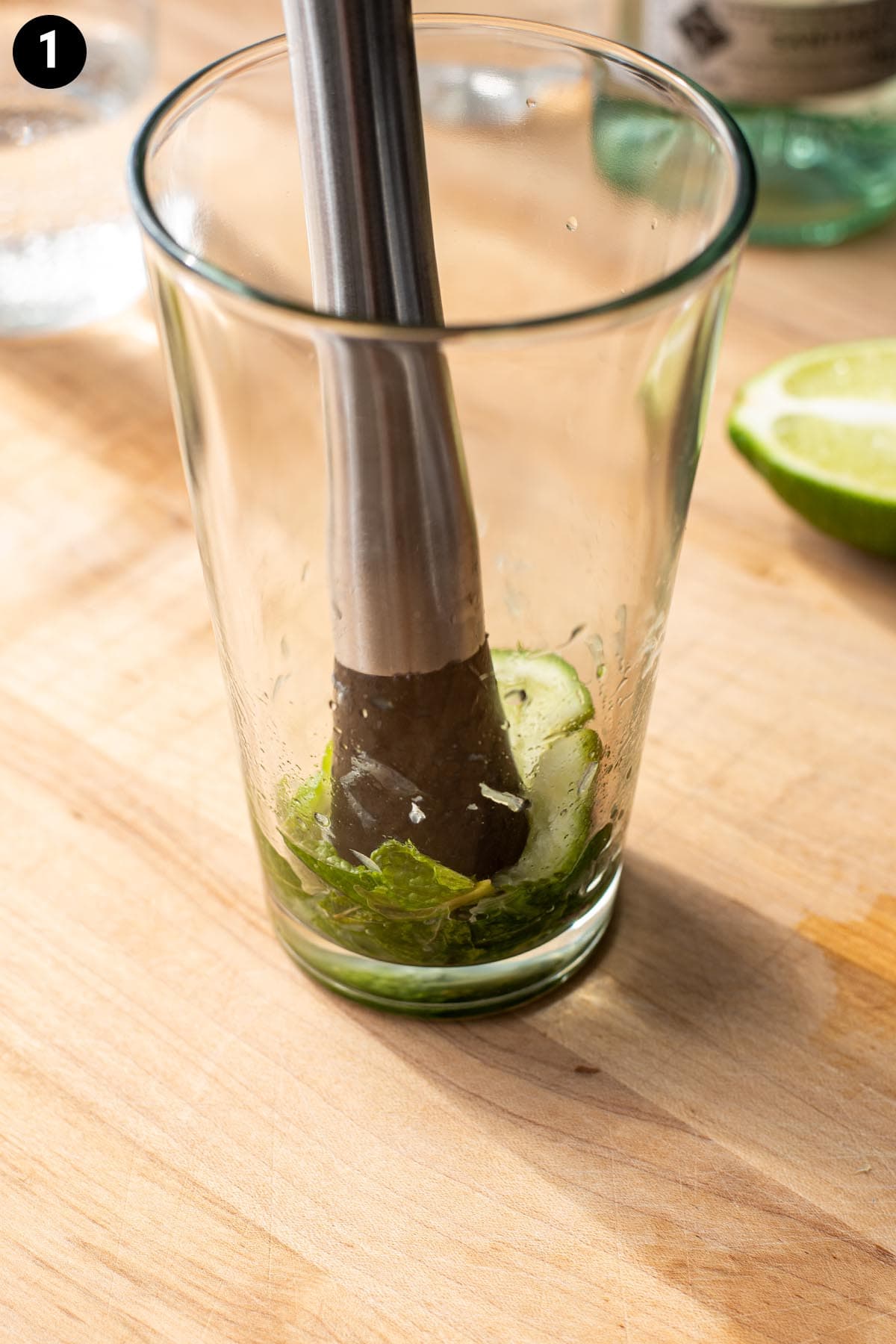
Step 2.
Add rum, simple sugar, ice, and shake for 10 seconds.
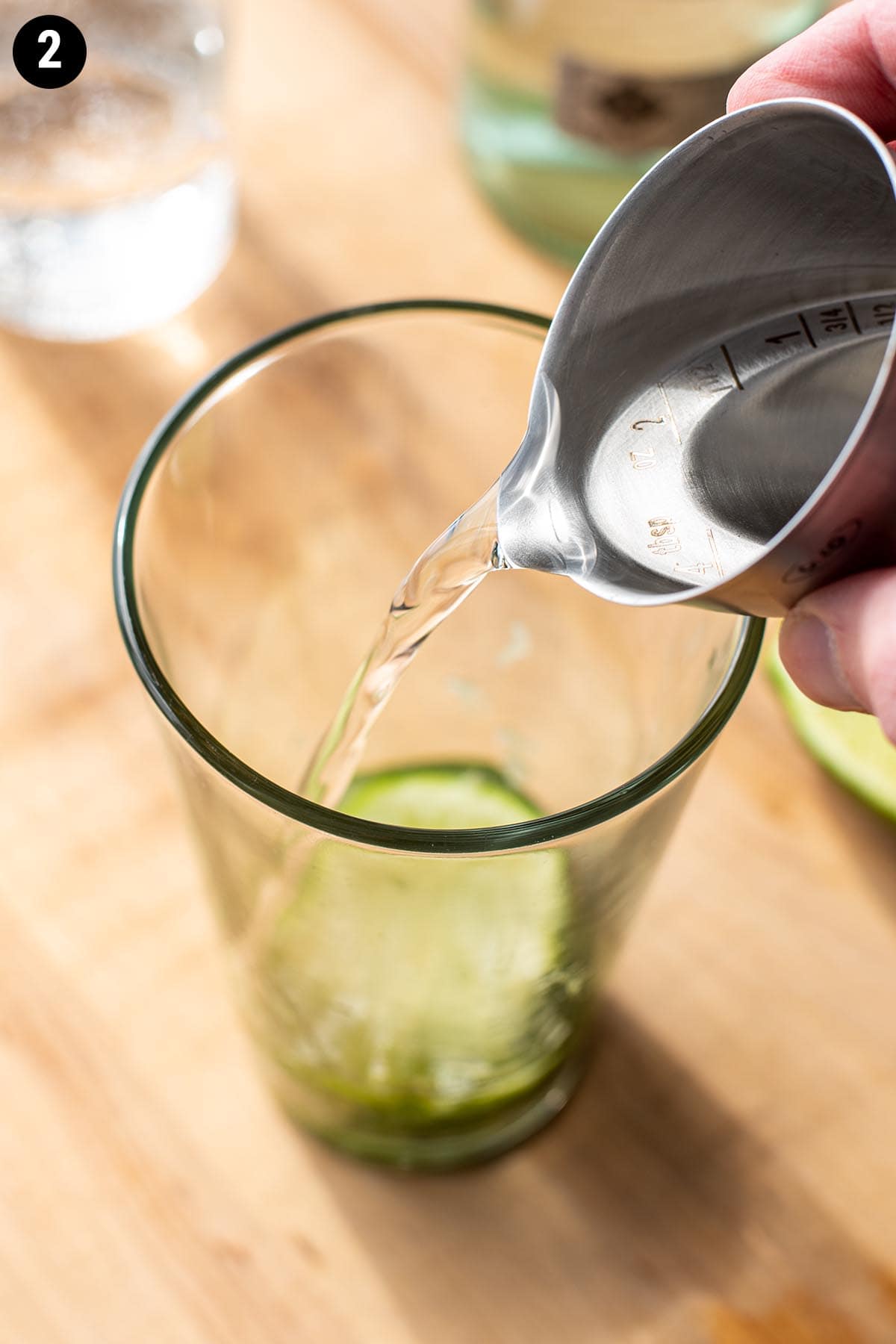
Step 3.
Pour contents into a glass (no straining) and top with two ounces of club soda. Stir and garnish with mint leaves.
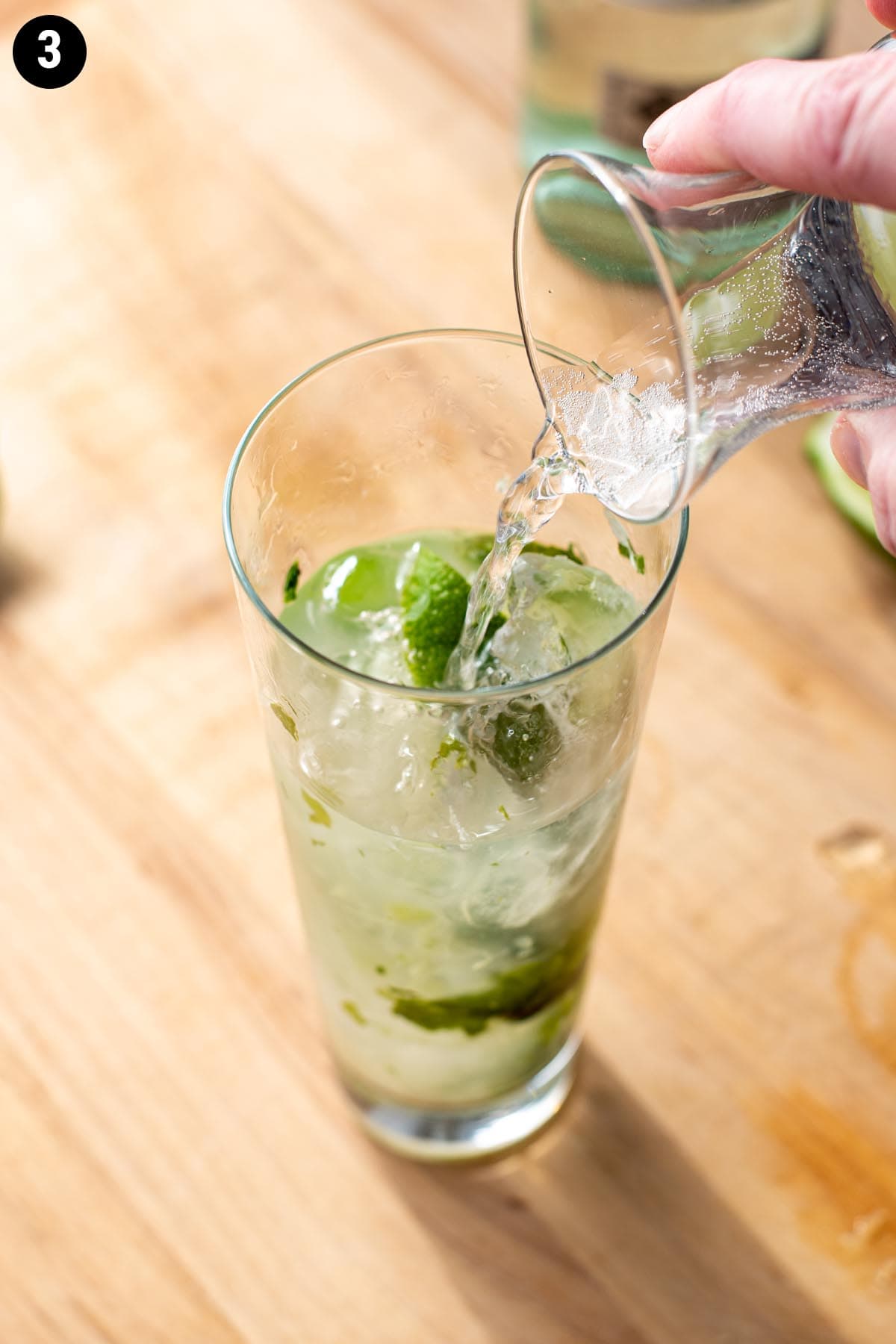
Expert Tips
- Invest in a good muddler: a muddler is a cocktail device used to mash and pulverize fruits and fresh herbs to extract flavors and juices. They’re inexpensive and a solid addition to any home bar set. It makes the whole process much easier.
- Simple syrup is the key to a good Mojito: liquid sugar syrup easily mixes/dissolves into the cocktail instead of sinking to the bottom like granulated sugar. You can buy simple syrup or make your own by heating equal parts sugar and water on the stovetop.
- Add your favorite fruits: this recipe can be easily fruited by muddling in fresh or frozen fruits. It’s a great way to add flavor and the options are endless.
- Slap a mint sprig on the back of your hand before garnishing: this method releases the oils and makes the mint more aromatic with every sip.
Frequently Asked Questions
Use Mojito mint, spearmint, or peppermint: Mojito mint is the mildest mint and the official mint for the cocktail. Spearmint is most readily available at most grocery stores year-round and has the most intense flavor. Peppermint is another great mild alternative.
Darker rums will introduce vanilla, caramel, and spice flavors to the Mojito. While not traditional, it will create a unique cocktail variation.
Similar Cocktails
Enjoy this recipe? If you made this cocktail, please leave a ★ ★ ★ ★ ★ star rating in the recipe card below & a review in the comments!
Mojito Recipe

Ingredients
- 2 ounces white rum
- 2 ounces club soda
- 1/2 ounce lime juice, or 3 lime wedges
- 1/2-3/4 ounce simple syrup
- 6-7 mint leaves
Instructions
- In a Boston shaker, muddle limes, mint leaves, and optional fruit until pulverized.
- Add rum, simple sugar, ice, and shake for 10 seconds.
- Pour contents into a glass (no straining) and top with two ounces of club soda. Stir and garnish with mint leaves.
Notes
Nutrition
Nutrition information is automatically calculated, so should only be used as an approximation.
